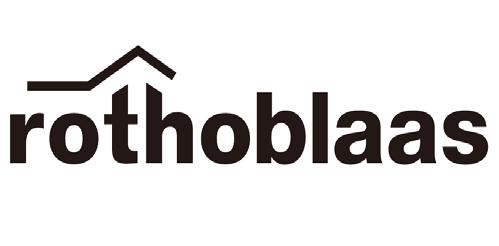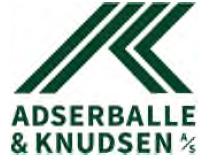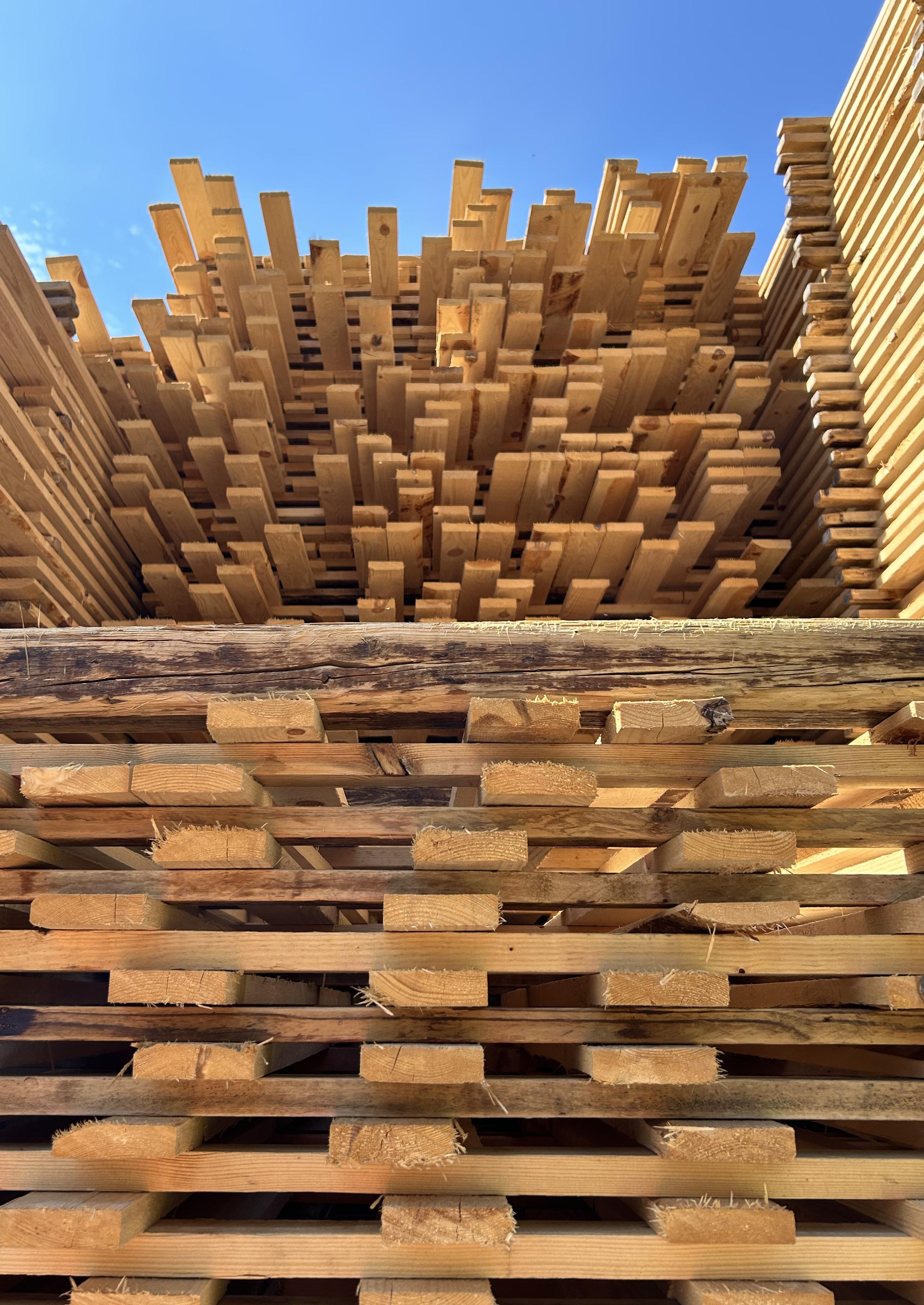














































Published
2024 by
Waugh Thistleton Architects
© Waugh Thistleton Architects (2024) all rights reserved.
ACKNOWLEDGEMENTS
This guide has been developed as part of the Build-in-Wood project that received funding from the European Union’s Horizon 2020 research and innovation programme under grant agreement no. 862820
DISCLAIMER
This publication is provided for information purposes only. The views expressed are those of Waugh Thistleton Architects and other Build-in-Wood consortium contributors. Waugh Thistleton Architects and the Build-in-Wood consortium does not accept any responsibility for the contents or any loss, damage or injury which might occur as a result of following or using data or advice given in this publication.
Anyone using this guide must satisfy themselves regarding the application of statutory requirements, local building regulations, codes, insurance certification or other requirements or recommendations relevant to the location where they plan to build.
To the maximum extent permitted by applicable law, Waugh Thistleton Architects and the Build-in-Wood consortium disclaims all representations or warranties – express, implied, statutory, or otherwise – including (but not limited to) implied warranties of fitness for a particular purpose, accuracy or validity or completeness of information, merchantability, title, quality, and non-infringement. You assume full responsibility for any loss resulting from use of or inability to use the information, data, or advice in this guidance.

This booklet catalogues the various components of the Build-in-Wood structural and façade systems, to help users identify the correct solutions for any given project. Each page is dedicated to a given component type, illustrating the range of solutions that have been designed to achieve different geometric or performance-based requirements. Additional commentary indicates the rationale for the range proposed alongside relevant assumptions made by the consortium and key considerations for users to aid their design process. Focus is afforded to maximising the use of timber and bio-based materials within the constraints of local regulations.
Efforts have been made to ensure the solutions presented have been carefully designed and calculated by consortium members with expertise in the relevant areas, and tested in line with European standards wherever possible. Where a solution is not provided for the exact performance level required on a given project, it is envisaged that solutions close to the required level, alongside engineering guidance, can be used to propose a modification to the solution for subsequent analysis and, where required, testing.
Any advice given to help users modify the illustrated solutions to meet the needs of a particular project must be checked and verified by the project design team. All tested solutions are clearly labelled as such, alongside reference to the Buildin-Wood partners who undertook the testing. For further information relating to test specifics and detailed results please reach out to the relevant parties.

A building’s use can greatly impact its geometry, loading and performance requirements.
Build-in-Wood assumes a typical loading for each of its uses: residential and commercial. However, it is understood that different loading criteria may be required in specific areas of a building. Where congregation or other uses are anticipated, structural members must be resized by the design team.
If areas of higher loads are required, localising these and ideally positioning them at lower floors will minimise the impact on overall material use and allow the use of unmodified Build-in-Wood component sizes, as described in this guide, to the floors above.
The more onerous performance requirements for residential use often necessitate concealing the majority, if not all, of a timber structure behind plasterboard and other inert materials.
In contrast, it is usually possible to expose a significant portion of the structure in an office building, where performance requirements are often less onerous, and the aesthetic and well-being benefits of the material have been shown to attract tenants and improve productivity.
For this reason, the Build-in-Wood solution assumes a concealed structure for residential scenarios and exposed for commercial. However, in both use cases it is of paramount importance that the extent of exposed timber, if any, is reviewed with a fire consultant to consider the fire load contribution.
–
Build-in-Wood component sizes assume a typical loading for each of the two main use classes studied as follows; 2kN/m2 for residential and 3 kN/m2 for commercial.
– Build-in-Wood structural system components assume exposure levels as follows; fully concealed for residential and partial to full exposure for commercial.
–
Build-in-Wood structural system assumes floor to floor heights as follows; 3m for residential and 4m for commercial.
– The adaptability of the Build-in-Wood system makes mixed use proposals and future adaptability of use more readily achievable.
– To allow flexibility for future change of use, the system should be designed to the more onerous or more generous criteria between the two required levels.
– For example, choosing to build with a higher floor to floor height allows for greater future flexibility to adapt or modify the building’s use, during or after construction, offering greater certainty of building longevity. However, additional costs and overall building height constraints must be considered.

MIN. CLEAR HEIGHT

2.3 m MIN. CLEAR HEIGHT
2.75 m
– 2 kN/m2 Loading criteria – Concealed structure – 3m Floor to floor height
FLOOR TO FLOOR HEIGHT
3 m
Uses range
– 3 kN/m2 Loading criteria – Exposed structure – 4m Floor to floor height
FLOOR TO FLOOR HEIGHT 4 m
The Build-in-Wood structural system has been designed for buildings between 5 and 10 stories in height.
If built with the system, projects of less than 5 stories could be over engineered, containing redundant material. However, a unique approach to using engineered timber can help to facilitate specific design aspirations in low rise schemes and so should be considered on a case-by-case basis.
For buildings over 10 stories, consideration of a hybrid approach, using engineered timber alongside other materials such as concrete and steel, could be required to keep member sizes practical and to use each material to its advantage.
The lightweight nature of a timber structure also makes the Build-in-Wood system an appropriate option for roof extensions on existing buildings.
It is important to consider the additional measures or restrictions when building on top of an existing structure, remembering that the resulting final building height may exceed that investigated here.
These requirements and restrictions must be studied and confirmed by the design team to ensure suitability of the system.
– Build-in-Wood structural system assumes floor to floor heights between 3 and 4m, storey heights significantly outside this range must be individually reviewed to fully understand their impact on the system design.
– The storey height will impact the number of storeys feasible within a building height restriction or the overall building height for a massing of a set number of stories.
– Regulatory requirements, particularly those relating to fire, often have overall height or storey number datums at which requirements change or become more onerous.
– For taller buildings, a more extensive stability structure will typically be required, potentially necessitating a concrete core.
– Taller buildings have greater structural demands and thus typically require larger structural members.
Likely to be over engineered
Figure: Stories range
‘Sweet spot’ for engineered timber
More suitable to hybrid system
The range of primary bay sizes within the Build-in-Wood system provides the flexibility necessary to suit a myriad of site dimensions and internal layouts.
The column free span of the primary space means that the secondary bay width can be lessened without impacting the usability of the main space, offering material and cost savings.
In residential buildings, the column line will typically be concealed within dividing non-structural walls, making their frequency even less impactful.
Build-in-Wood components assume a typical vibration performance appropriate to engineered timber. It is the responsibility of the design team to ensure that these levels comply with relevant legislation and, where not dictated by regulation, discuss the client’s expectations in the context of the material.
As a lightweight material timber naturally excites easily and so can require a substantial increase in size to limit vibrations, particularly where spans are large.
Permitting a lower vibration performance should be discussed in the context of the significance of a user’s ability to ‘feel’ the vibrations caused by another occupant.
– Build-in-Wood component sizes assume a typical loading for each of the two main use classes studied as follows; 2kN/m2 for residential and 3 kN/m2 for commercial.
– Larger spans will lead to larger element sizes. Deeper elements will have a more substantial impact on the available headroom.
– Larger spans lead to fewer components for a building of equal size, in turn requiring fewer lifts. However, larger elements can require the use of a tower, as opposed to mobile crane, and can therefore be more difficult to install.
– Use of standard sized elements offers the best value for money and material efficiency.
– CLT panels are available in standard widths. Selecting a primary bay depth that is a multiple of a standard (full or half) panel width, can help to minimise waste from cutting.

PRIMARY BAY DEPTH (M)
SECONDARY BAY WIDTH (M)

PRIMARY BAY DEPTH (M)
SECONDARY BAY WIDTH (M)
Figure: Grid range
The slab thickness is dictated by the secondary span or bay width required. A consistent slab type and thickness should ideally be used for both the primary bay and service corridor.
Solid CLT slabs are efficient up to a maximum of 6m. For anything above this width, whilst it is possible to use CLT, the volume of timber used becomes excessive.
For spans greater than 6m the use of a cassette offers substantial material savings for the same loading performance whilst also providing better vibrational performance.
Rib decks were studied as an alternative to floor cassettes. However, where exposed, their greater surface area requires more material to oversize the elements for charring. This in turn adds a higher contribution to the fire load, which should be carefully managed on an engineered timber building.
Rib decks are simple to construct, typically offering a cost saving over cassettes, and may offer an advantageous solution for larger span scenarios where the aspiration or requirement is to conceal the soffit and expose only beams and/or columns.
– Build-in-Wood component sizes assume a typical loading for each of the two main use classes studied as follows; 2kN/m2 for residential and 3 kN/m2 for commercial.
– Build-in-Wood slab solutions assume an average vibration performance of 6 Hz.
– Build-in-Wood component sizes assume a baseline 30min fire resistance performance inherent in the timber as a sacrificial charring layer.
– Element sizes will increase wherever they are exposed. The increase in size will be proportional to the level of fire performance required (see section 2.10)
– Use of standard element sizes offers the best value for money and material efficiency.
– CLT thicknesses and glulam dimensions shown for Build-in-Wood components are to the closest standard size. As such, minor changes in span may not lead to changes in component size (this should be checked by the design team).

220mm CLT slab

160mm CLT slab
220mm CLT slab
280mm CLT slab
200mm CLT cassette
60mm CLT slab
80 x 80mm Glulam ribs @ 500mm c.
60mm CLT slab
240mm CLT cassette
60mm CLT slab
60 x 120mm Glulam ribs @ 500mm c.
60mm CLT slab
320mm CLT cassette
60mm CLT slab
100 x 200mm Glulam ribs @ 500mm c.
60mm CLT slab
SECONDARY BAY WIDTH
Slab range
Given that the beams take the load from the slabs either side, beam size is dictated not only by the primary bay depth (length the beam is spanning) but also by the bay width.
Different beam sizes are provided for each grid, the length of the beam correlating to the primary bay depth. Sizes are provided for the typical beam as well as for the edge beam that carries the load from a single slab and the adjacent facade panel.
All beams are sized using typical quality GL24 glulam in standard widths and heights, with standard sections connected where required. Two-part beams can be connected using block gluing, however as only some manufacturers are able to offer this, they can be screwed together as an alternative. The screws are usually located in the top part of the beam where they are protected from fire by finishes or the floor slab.
Softwood and hardwood LVL were also considered as they offer a reduction in size for the same performance, increasing the available headroom. However, the availability of hardwood and softwood LVL is limited in the relevant sizes. As such, widely available and comparatively inexpensive glulam has been used for all component sizes.
Reductions in member sizes can also be achieved through different configurations, such as multiple beams at each column line.
– Build-in-Wood component sizes assume a typical loading for each of the two main use classes studied as follows; 2 kN/m2 for residential and 3 kN/m2 for commercial.
– Build-in-Wood component sizes assume a baseline 30min fire resistance performance inherent in the timber as a sacrificial charring layer.
– Element sizes will increase wherever they are exposed. The increase in size will be proportional to the level of fire performance required (see section 2.10)
– Use of standard element sizes offers the best value for money and material efficiency.
– Glulam dimensions shown for Build-in-Wood components are to the closest standard size. As such, minor changes in span may not lead to changes in component size (this should be checked by the design team).
– Block gluing results in lower embodied carbon than screwed connections due to the additional steel volume of the screws.

PRIMARY BAY DEPTH (M)

The service corridor beam size is dictated not only by the corridor width (length the beam is spanning) but also by the bay width, given that the beams support the load from the slabs either side. This bay width should match that of the primary accommodation bay.
A set depth for the service corridor is assumed for each use scenario as follows; 2.25m for residential and 3m for commercial. This allows for a residential access corridor and a slightly more generous space in commercial scenarios to accommodate break out spaces, informal meeting rooms or tea points as required.
Whilst it can be modified, increasing this depth will increase the size of the beams spanning this corridor, which could prove prohibitive for the proposed servicing strategy.
As with the primary bay, sizes are provided for a typical internal beam as well as the edge beam that carries the load from a single slab and the adjacent facade panel. All service corridor beams are also sized using typical quality GL24 glulam to standard widths and heights.
– Build-in-Wood component sizes assume a typical loading for each of the two main use classes studied as follows; 2 kN/m2 for residential and 3 kN/m2 for commercial.
– Build-in-Wood component sizes assume a baseline 30min fire resistance performance inherent in the timber as a sacrificial charring layer.
– Element sizes will increase wherever they are exposed. The increase in size will be proportional to the level of fire performance required (see section 2.10)
– Use of standard element sizes offers the best value for money and material efficiency.
– Glulam dimensions shown for Build-in-Wood components are to the closest standard size. As such minor changes in span may not lead to changes in component size (this should be checked by the design team).
– Block gluing results in lower embodied carbon than screwed connections due to the additional steel volume for screws.


The facade beam size is only dependent on the bay width that it is spanning. The beams are then sized to take the load of the facade panel’s inherent weight and the wind load it sustains.
It is assumed that the panels’ width correlates to the bay width of the structural system and that it is supported from the structure allowing full flexibility in terms of panel positioning. This means that the loading points for the panels are assumed to be at the centre point between the columns, which is the most onerous scenario.
The beam sizes are also designed to limit the deflection of the structure at this key interface with the facade system, to prevent significant movements that could cause damage or misalignments of the panels.
As with all other beams within the system, these sizes correspond to standard GL24 glulam. It is advised that a consistent material is used for the columns and beams throughout any given project where possible, as this will ease procurement and installation.
– Build-in-Wood component sizes assume a typical loading for each of the two main use classes studied as follows; 2 kN/m2 for residential and 3 kN/m2 for commercial.
– Build-in-Wood component sizes assume a baseline 30min fire resistance performance inherent in the timber as a sacrificial charring layer.
– Build-in-Wood façade beams sizes assume worst-case loading scenario (central symmetric).
– Element sizes will increase wherever they are exposed. This increase in size will be proportional to the level of fire performance required (see section 2.10)
– Use of standard element sizes offers the best value for money and material efficiency.
– Glulam dimensions shown for Build-in-Wood components are to the closest standard size. As such, minor changes in span may not lead to changes in component size (this should be checked by the design team).


Columns are the components within the structural system whose size are influenced by the greatest number of design variables; use, bay depth, bay width, building height and column location.
As with the Build-in-Wood beams, all columns are sized using standard widths and heights for typical quality GL24 glulam. Where two-part columns are screwed rather than block glued, the screws should be recessed, and the holes closed with a timber plug if exposed.
Again, hardwood or softwood LVL can be considered to reduce section sizes where this is a particular project driver, however it is preferable for a consistent material to be used for all columns and beams in a given project.
Exterior and corner columns should be eccentrically loaded to create a flush face for installation of the facade panels. This is possible due to the reduced load carried as compared with the internal columns.
The column size diagrams illustrate the indicative alignment for the proposed eccentric loading.
– Build-in-Wood component sizes assume a typical loading for each of the two main use classes studied as follows; 2 kN/m2 for residential and 3 kN/m2 for commercial.
– Build-in-Wood component sizes assume a baseline 30min fire resistance performance inherent in the timber as a sacrificial charring layer.
– Build-in-Wood structural system assumes floor to floor heights as follows; 3m for residential and 4m for commercial.
– Element sizes will increase wherever they are exposed. The increase in size will be proportional to the level of fire performance required (see section 2.10)
– Use of standard element sizes offers the best value for money and material efficiency.
– Glulam dimensions shown for Build-in-Wood components are to the closest standard size. As such minor changes in span or height may not lead to changes in component size (this should be checked by design team).


A less understood consequence of the lightweight nature of timber is its impact on sound transmission in comparison to conventional heavy masonry structures.
The principles for mitigating sound transmission are well tested and documented for concrete buildings, however these same principles and calculation methods are not appropriate to mass timber buildings.
This acoustic uncertainty is most relevant to the impact sound performance of floors, which has consequently been a key focus of the consortium’s attention.
Build-in-Wood has developed solutions to achieve various levels of acoustic performance, both with and without exposed timber soffits, and with the integration of raised access floors, which until now has had very little test data in combination with engineered timber. Proposed solutions have been physically tested to verify their performance.
The solutions developed achieve the necessary performance criteria without resorting to the typical approach of heavy wet screeds, which do not align with the project goals to use prefabricated, clean, and dry materials that are also simple to demount and reuse.
Flanking transmission should also be considered for key interfaces to understand how sound travels through the timber structure.
– Based on analysis of European regulations at the time of the project, the Build-in-Wood solutions developed aimed to achieve the following range of acoustic performance levels when tested on site (this considers reduction in performance due to flanking transmissions which is typically around 8dB):
Low: ≥45dB airborne / ≤65dB impact
Mid: ≥50dB airborne / ≤60dB impact
High: ≥55dB airborne / ≤55dB impact
– All solutions are tested with a minimum slab depth of 14omm. It is assumed an increased slab depth will not negatively impact performance however this must be verified by the design team.
– The solutions have not been tested on CLT cassettes, a similar performance is anticipated however this should be verified by the design team.
– All build-ups require an additional floor finishing layer.
– Structural depths vary, refer to previous section for slab and beam sizes appropriate to the project needs.
– Suspended ceilings should ideally be located below the underside of the primary beams (unless beams are contained within non-structural partition walls).
– Linings can be wrapped around beams to provide continuity of fire performance whilst maximising headroom between beams, however the acoustic impact of this must be assessed by the design team.
– Raised access floor depths can vary due to project requirements between around 150mm and 450mm. The impact of an increased void must be assessed by the project design team.
– Where high acoustic performance is required within commercial scenarios it may be necessary to introduce a suspended ceiling, all tested build-ups are suitable for various use scenarios.


WITH SUSPENDED CEILING
Solution 1*: Rw 63dB / Ln,w 53dB
- 160-240 mm CLT slab
- 60mm suspended ceiling cavity with 30mm mineral wool insulation
- 2 x 12.5mm KNAUF Silentboard

COMMERCIAL
Solution 2*: Rw 71dB / Ln,w 47dB
- 36mm KNAUF GIFA Floor DB green
- 150mm raised access floor cavity with PGR pads to pedestals
- 160-240mm CLT slab
- 200mm suspended ceiling cavity with 100mm mineral wool insulation
- 1 x 18mm KNAUF GFK board
WITHOUT SUSPENDED CEILING
Solution 4*: Rw 51dB / Ln,w 77dB
- 36mm KNAUF GIFA Floor DB green
- 150mm raised access floor cavity with PGR pads to pedestals
- 120mm mineral wool insulation
- 160-240 mm CLT slab

Solution 5*: Rw 52dB / Ln,w 70dB
- 38mm KNAUF GIFA Floor FHB
- 12mm KNAUF TPE Impact Insulation
- 160-240 mm CLT slab
Solution 3*: Rw 72dB / Ln,w 42dB
- 38mm KNAUF GIFA Floor FHB
- 12mm KNAUF TPE Impact Insulation
- 160-240mm CLT slab
- 200mm suspended ceiling cavity with 100mm mineral wool insulation
- 2 x 18mm KNAUF GFK board
Solution 6*: Rw 56dB / Ln,w 60dB
- 36mm KNAUF GIFA Floor DB green
- 150mm raised access floor cavity with PGR pads to pedestals
- 38mm KNAUF GIFA Floor FHB
- 12mm KNAUF TPE Impact Insulation
- 160-240 mm CLT slab
* The airborne and impact sound acoustic performance levels stated have been tested under laboratory conditions by KNAUF, please note performance in situ will be influenced by other factors including flanking. Please contact KNAUF for further information regarding the specific test results and interpreting the performance for given project scenarios.
The Build-in-Wood lining solutions for fire resistance are designed to provide the full performance solely through the lining, an approach referred to as encapsulation. Whilst this typically results in a requirement for a greater quantity of gypsum board, it also has various benefits.
By fully protecting the concealed timber structure, the timber is prevented from contributing to the fire load.
In addition, by using an encapsulation approach the solutions developed are applicable irrespective of the variability of the component requiring the resistance to fire performance; be that column, beam or slab of varying dimensions and structural loadings.
The solutions have been tested as K2 class linings to allow for this variability, however certain regulations require an REI performance accreditation that includes the structural element under the relevant loading. The requirement for this additional certification must be checked by the design team and additional tests carried out if required.
When fire resistance is to be provided by the charring layer, these have been calculated using the relevant method within Eurocode 5 and should be added to all exposed faces of the relevant components.
Charring layers to the ‘edge’ surface of exposed beams and columns should anticipate higher charring rates at the glue lines and therefore allow for a thicker charring layer.
– Build-in-Wood components are assumed to be manufactured using thermosetting glues.
– Build-in-Wood charring layer fire resistance solutions are calculated using the methods in Eurocode 5.
– Build-in-Wood lining fire resistance solutions assume full and complete encapsulation where elements are concealed. This means the entire fire resistance performance is achieved via the linings preventing any of the concealed structure from burning.
– These encapsulation solutions can also be applied to CLT cassette floors and/or glulam columns and beams.
– These charring depth solutions can also be applied to all exposed faces of CLT cassette floors and/or glulam columns. The impact of multiple exposed surfaces on the residual structural section must be checked and verified on a case-by-case basis.
– Fire resistance solutions for the concealed residential scenario can be applied within commercial buildings where certain elements are to be concealed to manage the fire load.
– K2 performance does not typically go above 60 minutes however in order to propose encapsulation solutions for longer resistance periods, solutions have been tested for longer periods following the same methodology and criteria - the suitability of the resulting K2 performance will be subject to acceptance of this approach from local regulatory bodies.

ENCAPSULATED SOFFIT

30 MINUTES*
- Floor build-up (varies)
- 160-240 mm slab
- 15mm ceiling cavity (timber battens or metal profiles)
- 2 x 12.5mm KNAUF fire resistant boards (DF)


COMMERCIAL
EXPOSED SOFFIT
60 MINUTES*
- Floor build-up (varies)
- 160-240 mm slab
- 15mm ceiling cavity (timber battens or metal profiles)
- 2 x 18mm KNAUF fire resistant boards (DF)
90 MINUTES*
- Floor build-up (varies)
- 160-240 mm slab
- no ceiling cavity
- 3 x 15mm KNAUF fire resistant boards (DF)
* The fire resistance performance levels stated have been tested as K2 class encapsulation solutions under laboratory conditions by KNAUF. Please contact KNAUF for further information regarding the specific test results and interpreting the performance for given project scenarios.
30 MINUTES
- Floor build-up (varies)
- 160-240 mm slab (charring layer included within baseline Build-in-Wood component sizes)
60 MINUTES
- Floor build-up (varies)
- 160-240 mm slab plus additional 45 mm charring layer
90 MINUTES
- Floor build-up (varies)
- 160-240 mm slab plus additional 65 mm charring layer

The core of the Build-in-Wood facade system comprises an LVL frame designed to distribute wind load and the panels’ own self-weight back to the building’s primary structure, without excessive material use.
The frame is designed as softwood LVL due to its standard dimensions across Europe as well as its higher tolerances and lower deflections.
Conventional C24/KVH timber was also explored, however, sizes can vary potentially leading to redundant material and increased thermal bridging. The structural performance of C24/KVH timber is also lower with consequent impact on flexibility for openings.
The panel sizes proposed correlate to the bay width and floor to floor heights of the Build-in-Wood structural system. Structural calculations for the different panel sizes and different wind loads showed minimal variation in the required post sizes. These findings coupled with the desire to use standard element sizes led to the system’s use of a fixed post size suitable for all scenarios.
The LVL elements are 45mm wide by 200mm deep with the vertical posts at approximately 600mm centres, and perimeter edge posts located top and bottom. An OSB sheathing board is then fixed directly to the structural frame adding stability and rigidity to the panel.
7.5m is set as the maximum facade panel width, with an understanding that this will not correlate to the grid of the deepest bay on the return elevation (parallel to the primary beams) where a series of smaller panels will be required.
– Build-in-Wood facade system is non-loadbearing; carries only wind load and self-weight supported off the primary structure.
– The structural sizes of the Build-in-Wood Facade System assume a maximum panel dead load of 90kg/m² and a maximum wind load of 1.4kN/m² (characteristic value based on an analysis of typical sites, site exposures and building heights between 5 and 10 storeys).
– Build-in-Wood structural system assumes floor to floor heights as follows; 3m for residential and 4m for commercial. Facade panel heights can be adjusted to between 3 and 4m irrespective of building use, however this may impact the feasibility of opening configurations.
– Where wind loads are calculated to exceed those assumed within the scope of Build-in-Wood, the impact on the structural frame sizing as well as the opening rules must be confirmed by the design team.
– Where it is possible to use smaller width panels within elevational design constraints, there is the potential to facilitate larger openings and ease installation.

Non-combustible solution:
Where dictated by regulations, thermal bridge limiting 2mm thick steel profiles of 195mm deep can be directly substituted in lieu of the LVL posts at the same spacing to achieve the same range of panel sizes. A non-combustible sheathing board should also replace the OSB.


Panel size range
By fixing the post size and setting out for the sub-structural frame irrespective of wind load or panel size, a single set of detailed rules for the location and size of openings has been established for any situation. Rules are provided as opposed to different opening scenarios to provide maximum flexibility in elevation design.
Posts should be set out at, or slightly below, 600mm centres so that they are equally spaced across the panel’s width. These positions can be adjusted slightly to better suit the desired locations for openings, so long as the distance between any two adjacent posts does not significantly exceed 600mm.
Full flexibility is provided for the horizontal location of openings as long as a solid portion of panel is maintained either side of the opening containing two regularly spaced posts (nominally 600mm).
There is also no limit on the number of openings across the width of any given panel as long as an additional equivalent solid piece of panel (approximately 600mm) is maintained in between each subsequent opening.
If the width of an opening is less than the spacing of the posts, no adjustment to the structure needs to be made, however additional posts should be provided at the edge of wider openings.
Full flexibility of opening height is possible as long as a solid portion of minimum 500mm is maintained at the top of the panel. Opening heights do not need to be consistent as long as the above rules are respected.
– Build-in-Wood facade system is non-loadbearing; carries only wind load and self-weight supported off the primary structure.
– The structural sizes of the Build-in-Wood Facade System assume a maximum panel dead load of 90kg/m² and a maximum wind load of 1.4kN/m² (characteristic value based on an analysis of typical sites, site exposures and building heights between 5 and 10 storeys).
– Build-in-Wood structural system assumes floor to floor heights as follows; 3m for residential and 4m for commercial. Facade panel heights can be adjusted to between 3 and 4m irrespective of building use, however this may impact the feasibility of opening configurations.
– Where wind loads are calculated to exceed those assumed within the scope of Build-in-Wood, the impact on the structural frame sizing as well as the opening rules must be confirmed by the design team.
– Where it is possible to use smaller width panels within elevational design constraints, there is the potential to facilitate larger openings and ease installation.

Non-combustible solution:
The same opening rules can be applied where steel profiles are being used. The profiles must be doubled up or interlocked where additional LVL posts would be required for large openings.
MINIMUM OPENING SURROUND
MINIMUM OPENING SPACING
There is full flexibility for the location of openings so long as a solid portion of panel, min 500mm deep, is maintained across the top of the opening and a solid portion of panel, as a minimum correlating to the width of two typically spaced vertical posts (circa. 600mm), is maintained on either side of the opening. An equivalently sized vertical solid piece must also be maintained between horizontally adjacent openings.
OPENINGS < / = POST SPACING no additional posts needed
OPENINGS 2 or 3 x POST SPACING + 1 post either side of opening
OPENINGS >/= 4 x POST SPACING + 2 posts either side of opening
There is also full flexibility as to the number and size of openings possible within the constraints outlined above although large openings have additional requirements. Openings that are at or below the typical vertical spacing of the posts (circa. 600mm) have no additional requirements. Openings larger than this require additional vertical posts to be positioned either side of the opening to take the load from the posts which have been ‘cut’ by the opening. The number of additional posts is proportional to the opening size.
Figure: Openings rules
The provision of full height openings with a level threshold is entirely feasible, however consideration must be given to the finished floor level of the proposed building.
The possible width of full height openings depends more on the depth of floor build-up, and subsequently the potential for the facade brackets to be located directly underneath the relevant opening, than on the panel or opening size.
The Build-in-Wood facade system is connected to the primary structure via a specifically designed yet simple angle bracket that sits on top of the facade beam and connects both the top of the lower facade panel and the bottom of the higher facade panel. The brackets are 500mm long and should be spaced at 1,000mm centres.
In residential scenarios, where the floor build-up depth is not sufficient to conceal this bracket, the full height opening width is limited to 1,000mm, with brackets located directly adjacent to this opening on either side.
This width can be increased to 1,500mm if the floor buildup is sufficient to allow the bottom edge beam of the panel to run under the opening. Whilst this does not allow for a bracket to be positioned under the opening, this continuous member helps to distribute the load into the brackets either side to enable a slightly larger opening.
In commercial scenarios (or where the floor build-up fully conceals the facade brackets) there are no additional restrictions for full height openings providing significant flexibility.
– Build-in-Wood facade system is non-loadbearing; carries only wind load and self-weight supported off the primary structure.
– The structural sizes of the Build-in-Wood Facade System assume a maximum panel dead load of 90kg/m² and a maximum wind load of 1.4kN/m² (characteristic value based on an analysis of typical sites, site exposures and building heights between 5 and 10 storeys).
– Build-in-Wood structural system assumes floor to floor heights as follows; 3m for residential and 4m for commercial. Facade panel heights can be adjusted to between 3 and 4m irrespective of building use, however this may impact the feasibility of opening configurations.
– An additional, rotated edge beam is provided at the top and bottom of the panel to enable fixing the panel to the main structure, whilst maintaining the required tolerance and minimum edge distances for fixing into LVL. This rotated post is assumed to also be 45 x 200mm, however, can locally be shorter to enable flush thresholds where required.

The same rules can be applied for level thresholds where steel profiles are being used. Non-perforated rotated C-profiles are required across the top and bottom of the panel for connecting to the structure. Availability of reduced height profiles are to be checked with the manufacturer if required for level thresholds.

NON-FULL
FFL < 150MM ASSL
Max opening width as rules
Brackets concealed within internal linings
FFL > 200MM
Max opening width as rules
Brackets concealed within internal linings

FFL > 250MM
Max opening width as rules
Brackets concealed within internal linings
FFL < 150MM ASSL
Max opening width 1,000mm
Brackets either side of opening, nothing under opening
FFL > 200MM ASSL
Max opening width 1,500mm
Brackets either side of opening, LVL edge beam continued under opening
FFL > 250MM ASSL
Max opening width as rules
Brackets concealed in floor finishes, height of rotated LVL edge beam can be reduced locally
The internal lining tailors the facade panel stratigraphy to the required fire resistance and acoustic performance levels whilst also providing a small internal cavity for distribution of services such as electric cables.
For the fire performance an encapsulation approach has been taken to allow the tested solutions to be applicable across all projects independent of the variability in panel stratigraphy ‘beyond’ the internal lining.
The test is performed solely on the gypsum lining, services cavity and any acoustic insulation in front of an OSB board. The face of the OSB is measured to ensure maximum temperatures are not exceeded and no charring takes place to confirm the insulation and integrity (EI) performance is achieved.
It is important that the exact thickness, number, and type of gypsum boards used in the test is specified as well as ensuring the battens, any insulation and even the fixings for the gypsum board are consistent. However, assuming the internal lining is consistent with the test the results are applicable with full flexibility as to the panels make up beyond this lining.
Unfortunately, a similar approach cannot be taken for acoustics which are tested as a ‘through wall’ build-up taking into account the specific stratigraphy, including insulation types and depths as well as the cladding material and other minor variations.
As such only specific scenarios can be acoustically tested, meaning confirmation and additional testing may be required where there are deviations from these solutions.
– Fire resistance performance of Build-in-Wood internal linings are tested as encapsulation solutions (K2 class), meaning the results are valid irrespective of insulation and cladding materials in the core and outer layers beyond the OSB sheathing.
– The lining solutions shown provide alternatives for a baseline and enhanced acoustic performance levels, the exact should be verified by the design team considering the entire facade build-up on a specific project.
– Acoustic criteria for façades will be influenced by noise levels on a specific site, subsequently the exact requirements must be confirmed by the design team.
– In certain instances, fire resistance is also required from the building exterior. This can be achieved by the cementitious board, however manufacturer advice with respect to the board thickness and any intumescent seals required between boards must be adhered to.
– K2 performance does not typically go above 60 minutes however in order to propose encapsulation solutions for longer resistance periods, solutions have been tested for longer periods following the same methodology and criteria - the acceptance of the resulting K2 performance will be subject to acceptance of this approach from local regulatory bodies.

- 15mm OSB sheathing board
- vapour control layer
- 30mm services cavity (timber battens) with 30mm glasswool insulation
- 1 x 18mm KNAUF fire resistant board (DF)
- 15mm OSB sheathing board
- vapour control layer
- 30mm services cavity (timber battens) with 30mm glasswool insulation
- 2 x 15mm KNAUF fire resistant board (DF)
- 15mm OSB sheathing board
- vapour control layer
- 15mm services cavity (timber battens or metal profiles)
- 2 x 12.5mm KNAUF fire resistant boards (DF)
30 MINUTES*

- 15mm OSB sheathing board
- vapour control layer
- 15mm services cavity (timber battens or metal profiles)
- 2 x 18mm KNAUF fire resistant boards (DF)
60 MINUTES*
- 15mm OSB sheathing board
- vapour control layer
- no services cavity
- 3 x 15mm KNAUF fire resistant boards (DF)
90 MINUTES*

* The fire resistance performance levels stated have been tested as K2 class encapsulation solutions under laboratory conditions by KNAUF. Please contact KNAUF for further information regarding the specific test results and interpreting the performance for given project scenarios.
The sub-structural frame of the Build-in-Wood facade panel not only offers greater material efficiency over a monolithic panel but also allows for thermal insulation to be provided within its structural depth, reducing the overall thickness of the facade.
With the depth of this sub-structural frame set at 200mm, a depth of 200mm of insulation between these posts can also be set as a constant for all scenarios. The thermal performance of this, as well as the thermal bridging of the timber posts, has been closely studied to establish the additional insulation required in various climates.
This additional insulation is provided within the external lining layer, varying from 0-100mm, and is then covered by a non-combustible breathable cementitious board.
This board forms the weather tightness of the panel and is inherently non-combustible, meaning it can be used irrespective of combustibility requirements for the facade. Attention must be given to detailing for ensuring continuity of this weather-tightness line at panel interfaces.
Whilst not a bio-based product, mineral wool has been proposed as insulation material for the baseline panel stratigraphy for both the insulation within the fixed structural layer and within the variable external lining.
This decision reflects increasing requirements for insulation to be non-combustible and the limited certification of bio-based insulations for use in buildings of the heights studied here.
– Build-in-Wood facade build-ups aim to achieve the following thermal performance levels:
Cold climate 0.1 W/m2K
Moderate climate 0.2 W/m2K
Warm climate 0.3 W/m2K
– The exact thermal performance should be determined through assessment of regulatory requirements, climatic conditions, and fabric performance targets for the project. A lower u-value can be used in moderate to cold climates for passive house design.

Combustible solution:
Where permitted by local legislation, bio-based insulation can be substituted in lieu of the insulation both between the structural posts and within the external lining layer.


COLD CLIMATE
0.1 W/m2K u-value
100mm additional mineral wool insulation

External lining range (varied thermal performance)
MODERATE CLIMATE
0.2 W/m2K u-value 50mm additional mineral wool insulation

1 XXX-SK-16/02/2021
HOT CLIMATE
0.3 W/m2K u-value
0mm additional mineral wool insulation
The choice of material and setting out of cladding is a unique aspect of every building, consequently the Buildin-Wood facade system aims to offer as much flexibility with regards to cladding as possible.
However, the focus of the consortium’s work has been to incorporate cladding materials whose properties align with the requirements for off-site installation. The Buildin-Wood facade system aims to mitigate the need for scaffolding on site, meaning the panels arrive to site fully externally finished and are connected back to the main structure from inside the building.
This means the cladding materials chosen must have certain qualities that lend themselves to prefabrication, transportation, and installation on site. The cladding materials recommended for the Build-in-Wood system are therefore light weight and robust.
Consideration of the cladding support system is also required to ensure it can withstand the movements and deflections of the panels during transportation and installation, and similarly the fixings must also tolerate these movements without causing damage.
The setting out and detailing of the cladding elements is particularly critical at panel interfaces where consideration should be given as to how to allow movement between panels whilst also achieving the cladding alignment required from a design perspective.
– Build-in-Wood facade design assumes a lightweight, durable cladding material pre-installed in the factory.
– The cladding support system and fixings selected should be confirmed as suitable for pre-installing the cladding in the factory then transporting to site and lifting into place.
– The exact cladding material selected should be determined by the design team considering design aspirations, site conditions, and sustainability credentials of the material.
– Embodied carbon data for different lightweight cladding solutions should also be appraised to help inform the design decision
finished panels

module width
module width
finished panels
Prefabricated, site finished frame cladding panels
Prefabricated, site finished monolithic cladding panels
Stick curtain walling with prefabricated infil panels

Onsite installation timeneed for scaffolding
Prefabricated, site finished frame cladding panels
Prefabricated, site finished monolithic cladding panels
Stick curtain walling with prefabricated infil panels
Onsite installation timeneed for scaffolding

WEIGHT
Unitised curtain walling
Prefabricated factory finished frame cladding panels
Prefabricated factory finished monolithic cladding panels
– The weight of the material affects whether it can be installed in the factory, light weight materials are considered for Build-inWood to facilitate fully factory finished panels
Percentage glazing
– The weight of the panels for transport and lifting on site must also be considered
Unitised curtain walling
Prefabricated factory finished frame cladding panels
Prefabricated factory finished monolithic cladding panels
– Robust materials are require to allow for offsite construction and transportation of the panels without damage
Percentage glazing
– Installation of the panels on site also requires a robust material to prevent damage
Figure: Cladding range and DfMA considerations
Prefabricated, site finished frame cladding panels
Prefabricated, site finished monolithic cladding panels
Onsite installation timeneed for scaffolding
Prefabricated, site finished frame cladding panels
Onsite installation timeneed for scaffolding

Prefabricated factory finished frame cladding panels
Prefabricated factory finished monolithic cladding panels
– The cladding support system can affect whether it can be installed on site, robust battens provide better security than some brackets
Percentage glazing
– The fixings themselves must be robust for transport and installation, the use of glue as a fixing should be avoided
Prefabricated factory finished frame cladding panels
MOVEMENT ALLOWANCE
– It is important to install sufficient movement joints or leave gaps in the cladding which allow for differential movement at the joints between panels